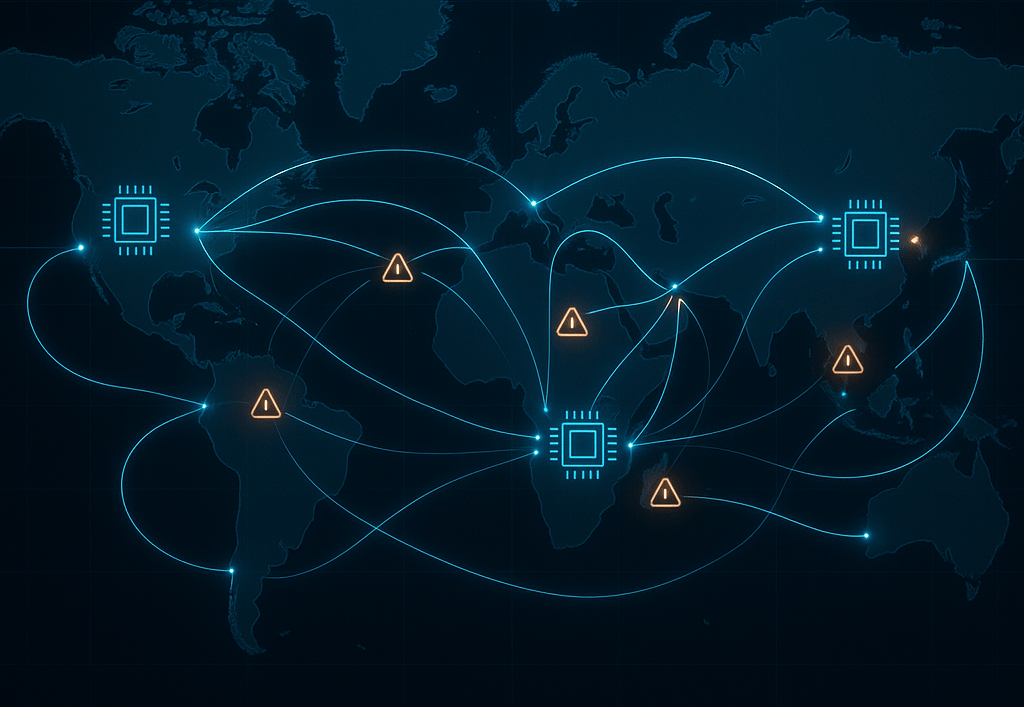AI Boom Spurs Global Memory Chip Shortage and Raises Prices
AI-driven demand is causing a memory chip shortage affecting consumer electronics and automotive industries, with rising prices and supply bottlenecks expected to impact products like smartphones and laptops globally.
AITECH INFRASTRUCTURETECHNOLOGYARTIFICIAL INTELLIGENCE
Eric Sanders
11/17/20255 min read


When AI Strains the Chip Supply: Why Your Next Phone or Car Could Cost More
In the relentless march of technology, artificial intelligence (AI) has become both a beacon of progress and an unforeseen disruptor. The growing appetite for AI-powered devices and services is unraveling behind the scenes in the global supply chain—specifically in the memory chip industry. What once seemed like steady supply and predictable demand has turned volatile, sending ripples that consumers will soon feel in their wallets and in the availability of everyday technology like smartphones and cars.
The Unseen Pressure on Memory Chips
Memory chips are the unsung heroes in virtually every modern gadget. From the smartphone buzzing in your pocket to the next-generation electric vehicle rolling down the street, these tiny silicon wafers store and access data at breakneck speed. But the explosion of AI applications — whether in language models, advanced driver-assistance systems (ADAS), or cloud computing — is ramping up the demand for these chips exponentially.
This AI-driven surge has ignited a significant shortage in the memory chip market, striking just as industries were already grappling with lingering pandemic-era supply chain woes. According to market analysts, the backlog in memory chip production could stretch well into 2026, with prices climbing steadily.
What’s Driving the Shortage?
It’s easy to attribute the shortage to simple scarcity, but the reality is layered:
- AI Model Growth: Training and running large language models and specialized AI algorithms require enormous amounts of data processing power and, by extension, high-capacity memory chips.
- Automotive Sector Demand: The automotive industry, accelerating toward autonomous and electric vehicle adoption, is inserting more memory chips per car than ever before. The complexity of onboard AI systems demands memory that previously wasn’t needed.
- Consumer Electronics Boom: Despite economic headwinds, smartphones, laptops, and other consumer devices still command upgrades that lean heavily on expanded memory capacities to support AI features and richer content.
As CNBC reported: “The combination of AI-driven demand and existing supply chain constraints will likely push up prices for memory chips, impacting a broad range of consumer products.” The practical fallout is straightforward but ominous: expect your next smartphone, laptop, or car to carry a bigger price tag with fewer discounts, at least in the short term.
Personal Reflections on Tech Dependency and Supply Chains
This shortage hit me when I was searching for a new laptop. The model I had my eye on, praised for its AI-enhanced capabilities, was suddenly marked up by nearly 15% compared to months before. Waiting for a price drop felt futile as news of the chip shortage grew louder.
It forced me to think beyond personal inconvenience to the broader picture. How often do we, as consumers, disconnect from the delicate and complex choreography guaranteed to deliver innovation into our hands? The intersection of AI and hardware supply is a stark reminder: technological progress isn’t guaranteed or free. It’s shaped by global manufacturing realities, resource scarcity, and fluctuating demand cycles.
Even the automotive industry, where I’ve been excited about electric vehicles and smart tech for years, is wrestling with this chip crunch. A friend who works in manufacturing shared how automakers are trimming vehicle features or pausing certain model launches because they simply can’t get enough memory chips.
The memory chip shortage is a microcosm revealing just how intertwined and fragile our tech ecosystem is — and how AI, often heralded as a technology of liberation, depends on very real material constraints.
What This Means for Consumers and Industries
Understanding the chip shortage equips us to think differently about technology consumption and product expectations. Here’s what the shortage means on different fronts:
- Price Inflation: Companies pass rising chip costs down the chain. Since memory chips are critical components, the price hikes are non-negotiable, impacting everything from phone bills to vehicle invoices.
- Extended Wait Times: Supply bottlenecks will likely stretch product release cycles and availability. If you want the latest smartphone or car model, patience is going to be a necessary virtue.
- Product Simplification: Some manufacturers may scale back on features or storage capacity to manage costs, leading to devices that might not be as cutting-edge as anticipated.
- Innovation Challenges: Paradoxically, the very AI innovations boosting demand for chips may slow if the hardware can’t keep pace. Startups and companies working on AI projects could face delays or funding challenges linked to hardware scarcity.
For industries, this shortage reiterates the importance of supply chain resilience and diversification. Building more localized manufacturing hubs, investing in chip production capacity, and innovating alternative memory technologies are critical strategies to mitigate future shortages.
Navigate the Chip Crunch as a Consumer
While individuals have little control over global chip supply, there are practical ways to prepare and adapt in the near term:
- Assess Your Upgrade Needs: Not every new phone or laptop upgrade is critical. If your current device manages daily tasks well, consider delaying the purchase until supply stabilizes.
- Be Flexible on Features: If cutting-edge AI integration or maximum storage isn’t essential, look for models with more modest specs that will be less impacted by shortages.
- Plan Purchases Early: If you must buy new tech, advance planning helps avoid inflated prices or stockouts during peak demand periods.
- Support Sustainable Tech: Conscious consumption, including buying from companies prioritizing supply chain resilience and sustainability, supports a healthier tech ecosystem.
The shortage is a cautionary tale about the hidden costs of rapid tech adoption. It’s a prompt to re-evaluate how much we expect technology to be instantly available and affordable amidst rapid evolution.
Why Does This Matter Beyond Price Tags?
Memory chips may seem like a niche topic, but this shortage strikes at something deeper: the balance between technological progress and resource reality. AI’s soaring growth isn’t just a digital evolution; it’s a physical challenge — relying on finite materials, complex manufacturing, and global trade networks vulnerable to disruption.
This shortage serves as a wake-up call that innovation must be tethered to sustainability, foresight, and strategic planning. The convenience of AI-powered tools we increasingly take for granted is both a triumph and a responsibility.
As we move forward, we must ask:
- How can technology companies design smarter supply chains that anticipate rapid shifts like AI demand spikes?
- Where should consumers recalibrate their expectations about the pace and cost of innovation?
Because ultimately, the tension between AI-driven demand and hardware supply is not just about chips. It’s about the future of how we create, consume, and sustain technology in a world where progress is both an opportunity and a challenge to manage.
In this evolving landscape, the next time you reach for your smartphone or admire the sophistication of an electric vehicle, remember the delicate, intricate dance happening hundreds of miles away in factories and boardrooms. The AI revolution is here — but it’s also a reminder that every leap forward comes with its own costs and constraints.
So, when the prices rise and waiting times grow, ask yourself: how ready are we to rethink the relationship between innovation, material limits, and the true price of progress?
Efficiency
Transform your workflows and reclaim your time.
Contact Us
Need A Custom Solutions? Lets connect!
eric.sanders@thedigiadvantagepro.com
772-228-1085
© 2025. All rights reserved.
